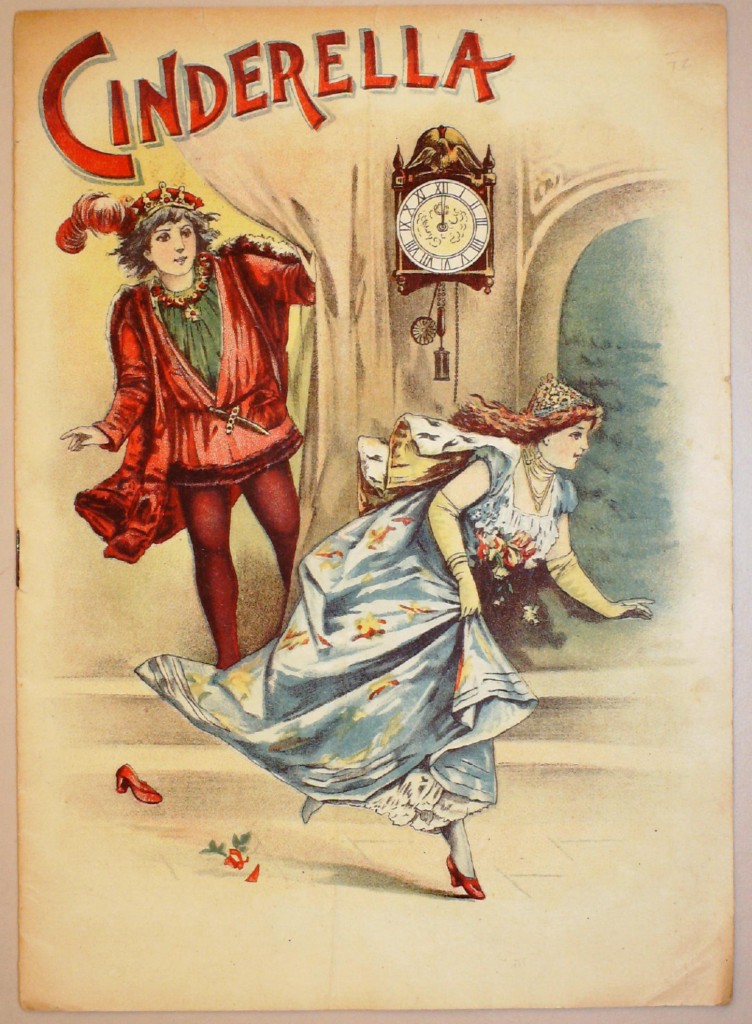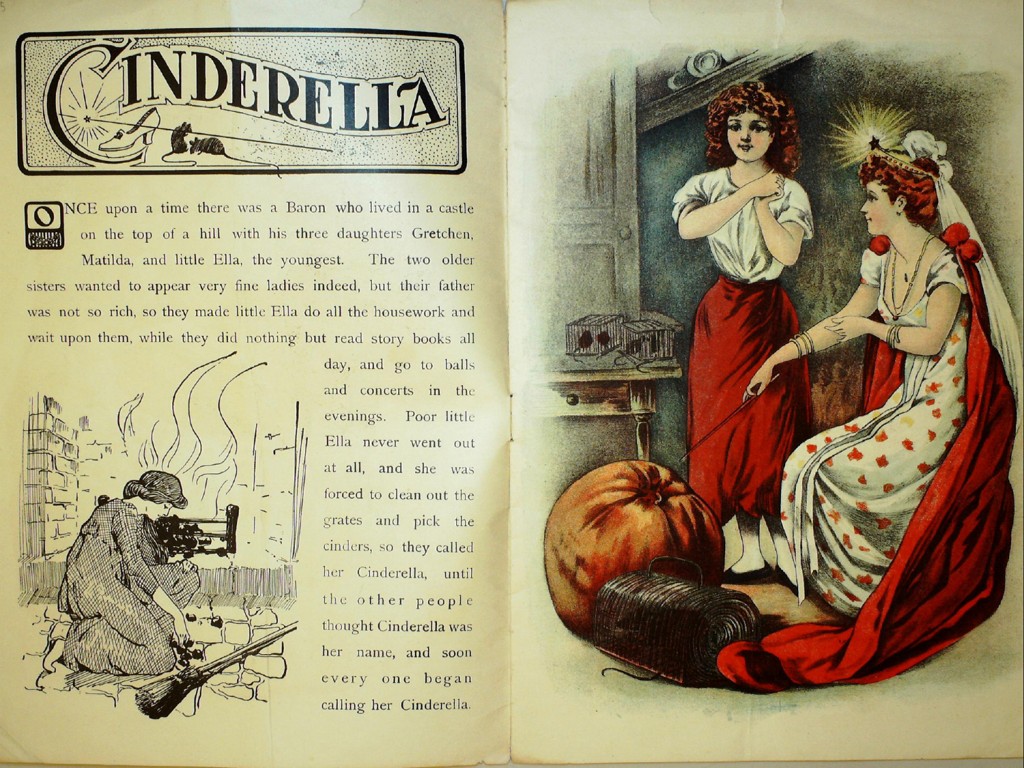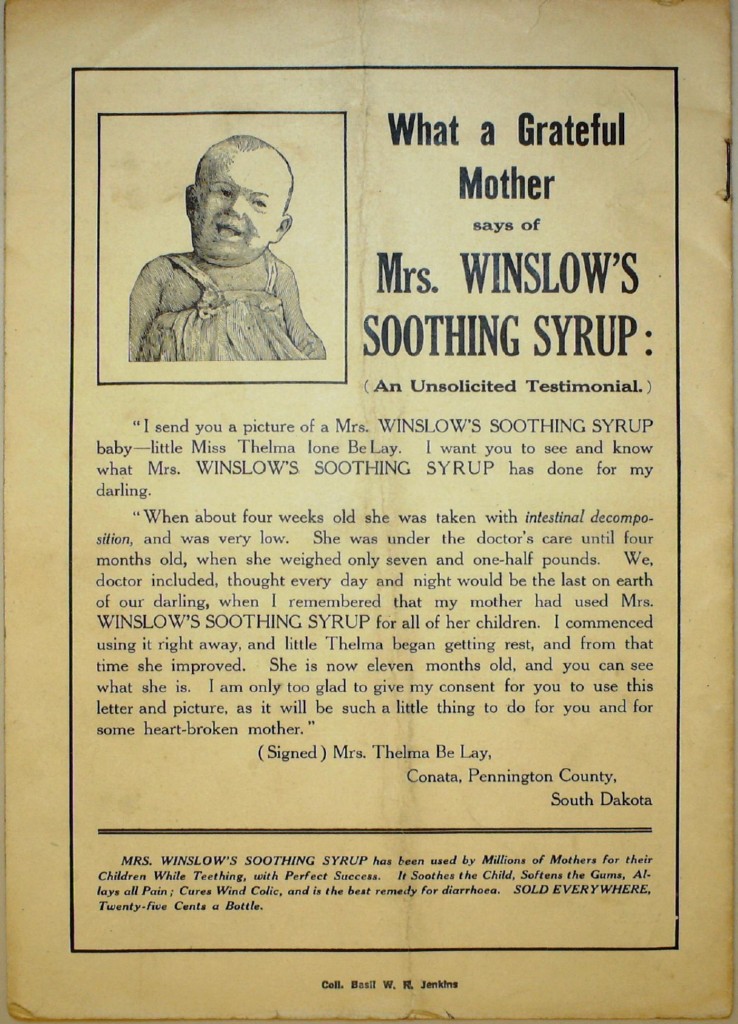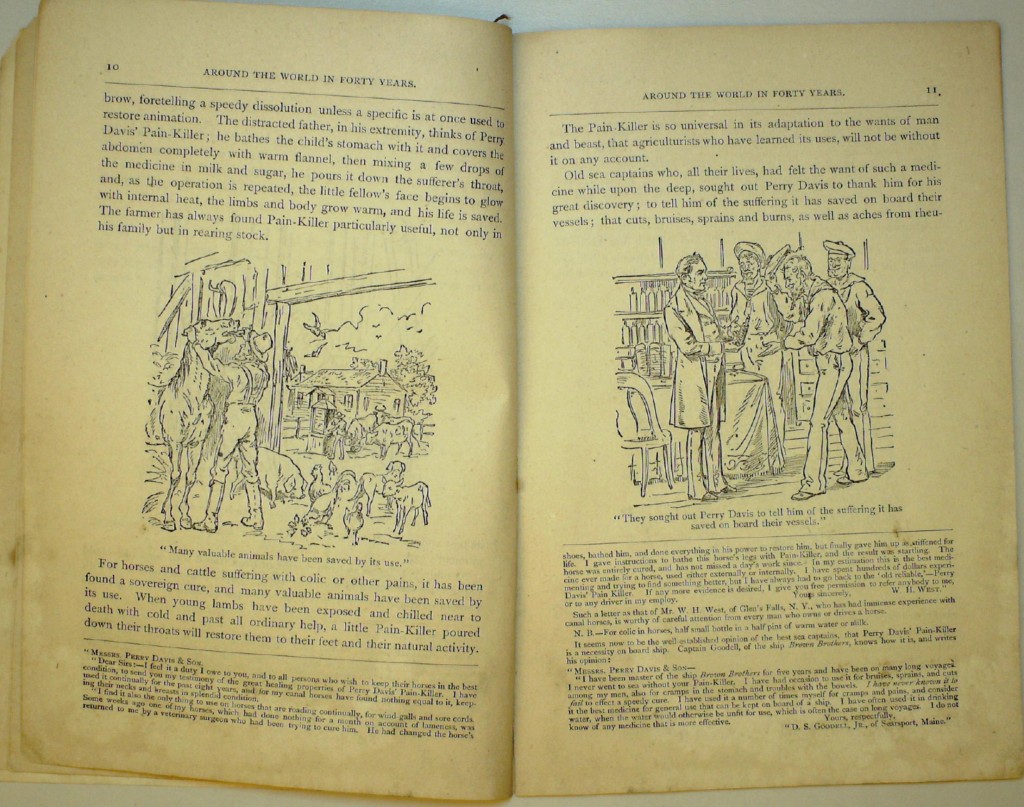 This post is part of an ongoing series featuring items recently cataloged from the Julio Mario Santo Domingo Collection.
This post is part of an ongoing series featuring items recently cataloged from the Julio Mario Santo Domingo Collection.
Patent medicines have been treated before in this space; these are specious remedies, containing any number of drugs and adulterants, that flourished in the 1800s, before the Pure Food and Drug Act of 1906 mandated ingredient lists and curbed fraudulent claims of panacea. Here are two pamphlets that demonstrate some of the many promotional tactics of the 19th-century snake-oil salesman.
First is an eight-page booklet containing the synopsized story of Cinderella, along with several handsome color lithographs. While the piece bears no publication information, the back cover is a full-page “unsolicited testimonial” for Mrs. Winslow’s Soothing Syrup, in which a relieved mother describes the nostrum’s curative effects on her infant daughter’s “intestinal decomposition”. Pictured is a rather stupefied child – understandably so, as the Soothing Syrup’s primary ingredients were alcohol and morphine. (Two of the product’s claims were that it relieved pain and cured diarrhea in children; in these, at least, it probably succeeded, as opioids generally cause constipation.)
The second pamphlet takes a similar approach, but couches the promotion of its elixir in the story itself. Around the World in Forty Years advertises Perry Davis’s Pain-Killer by telling the fictionalized story of Perry Davis, and the miraculous relief he brings to people the world over in his travels.
Footnotes running along the pages provide additional support in the form of user testimonials. Pain-Killer was another concoction of alcohol and opiates, and distinguished itself as a medication principally for the relief of pain; most patent medicines maintained that they could cure a litany of ills.
(An advertisement for Allen’s Lung Balsam, a subsidiary product of Pain-Killer and itself replete with opium, appears at the end; it purports to purify the blood and bring health to numerous vital organs, on top of treating lung disease.) In both cases, storytelling as sales tactic comports well with the outsized therapeutic claims that were typical of patent medicines.
Cinderella: AC85.A100.880c
Around the world in forty years: AC85.A100.880a
Thanks to rare book cataloger Ryan Wheeler for contributing this post.





